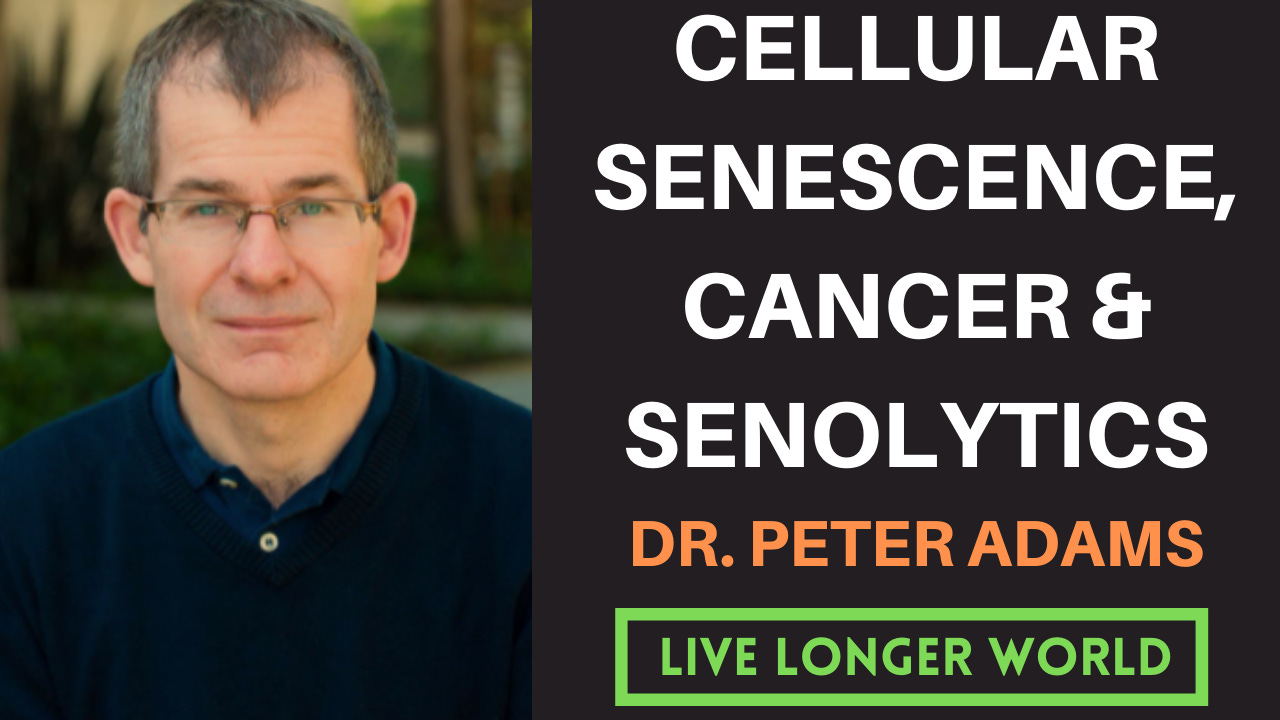Cancer, Cellular Senescence & Senolytics | Dr. Peter Adams
Live Longer World Podcast #16
"The interesting thing about senescence is that it both prevents cancer but promotes aging. So that got me thinking about both sides of it…Why does the incidence of cancer increase with age?""The thing about aging is that it’s so complex it affects everything, so you get exposed to different types of biology. The first time you start thinking about it, it’s kind of overwhelming, but then you come to appreciate it and the fact that it’s always connected to biology."Live Longer World Podcast Episode #16 has been released!
Dr. Peter Adams, Professor at Sanford Burnham Prebys Medical Discovery Institute, is an expert in the biology of aging and cancer. The Peter Adams Lab is focused on the Epigenetics of Cancer & Aging and their goal is to contribute to development of epigenetic-based interventions that promote healthy aging and suppression of disease, including cancer. You will hear about some of these contributions in this conversation.
Find Dr. Peter’s recent publications here.
In today’s episode, you will learn:
Cellular Senescence and it’s dual role in protecting against cancer but also causing tissue aging
The role of senolytic drugs to protect against age-associated cellular senescence
The connection between the mitochondria and cellular senescence
The Developmental theory of aging (Aging begins in the womb!)
If you are a premium subscriber, you can also read the summarized notes of these learnings below.
FIND ALL LIVE LONGER WORLD PODCAST EPISODES:
Website | YouTube | Apple | Spotify | Google | All Platforms
Listen to the Podcast:
Apple Podcasts:
YouTube:
All Platforms: here
Time Stamps:
00:00 Live Longer World
0:17 Peter Adams Intro
1:03 Cellular Senescence (& it’s dual role!)
12:47 Moles contain activated oncogenes
20:07 Senolytic Drugs: Should healthy middle-aged people take them?
25:38 Liver Cancer and Aging
35:53 Interferon Signaling & Immune System
36:54 Mitochondria & Cellular Senescence
41:53 Can Urolithin A clear senescent cells?
43:03 Chromostasis: Epigenetic Stability & Aging
55:01 Peter Adams interest in Cancer & Aging
1:00:33 Development & Aging (Aging begins in the womb!)
1:08:50 Aging is Universal. Let’s Unite in this Fight.
Premium Subscriber Summarized Show Notes of Key Points:
Cellular senescence has been implicated several times in aging. Can you begin by explaining what cellular senescence is and can you also explain the positive and the negative role it plays - for example it’s a protective mechanism against cancer but later on can in fact lead to cancer
Cell senescence was first described by Leonard Hayflick and Paul Moorhead back in the 1960s as a tissue culture phenomenon
They were growing normal human fibroblasts in a dish. And, what they noticed was that after certain number of population doublings, about 60 population doublings, these cells would just stop growing. They called this proliferation arrest cellular senescence
Cancer cells basically grow forever - they are immortal
So what Leonard noted at the time was that this proliferative arrest could be an anti-cancer mechanism
It would stop a potential cancer cell from proliferating uncontrollably
He also noted that it might put a limit on tissue regeneration and lead to tissue aging
For a long time cellular senescence remained this tissue culture phenomena till Judith Campisi showed that senescent cells also have this secreted inflammatory phenotype, which was called senescence associated secretory phenotype
Senescent cells secrete inflammatory cytokines and have the potential to interact with their neighbors and regulate the immune system
So when I (Peter Adams) think of senescence I think about 2 phenotypes.
One is the proliferation arrest by which cells stop growing
Two is this inflammatory phenotype or SASP (senescence associated secretory phenotype)
In 2005, there were a flurry of papers showing that senescence could be observed in vivo in both mice and humans in the context of oncogene activation
On the one hand, senescent cells protect against cancer, on the other hand they promote tissue aging
But there is exciting work being done in the field of senolytics (drugs that target senescent cells) to prevent tissue aging and promote healthy aging
They are also being tested to see if they can prevent chronic kidney disease, idiopathic pulmonary fibrosis and osteoarthritis
Senolytic Drugs: Should Healthy Middle-Aged People take them?
What is the right dosage? Which ones to take: there is quercetin, fisetin, dasatinib etc. Do they target only senescent cells or healthy cells as well? What age is the right time to take them? Should you take it if healthy?



